Finally ! Gaia’s Third Data Release
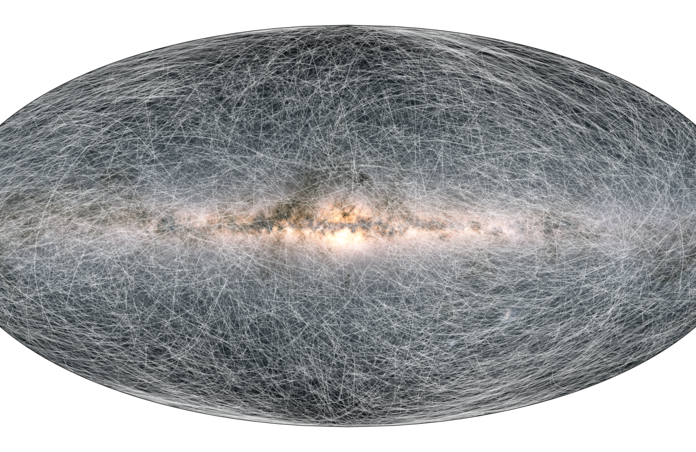
I attended the RAS-hosted ESA event for you !
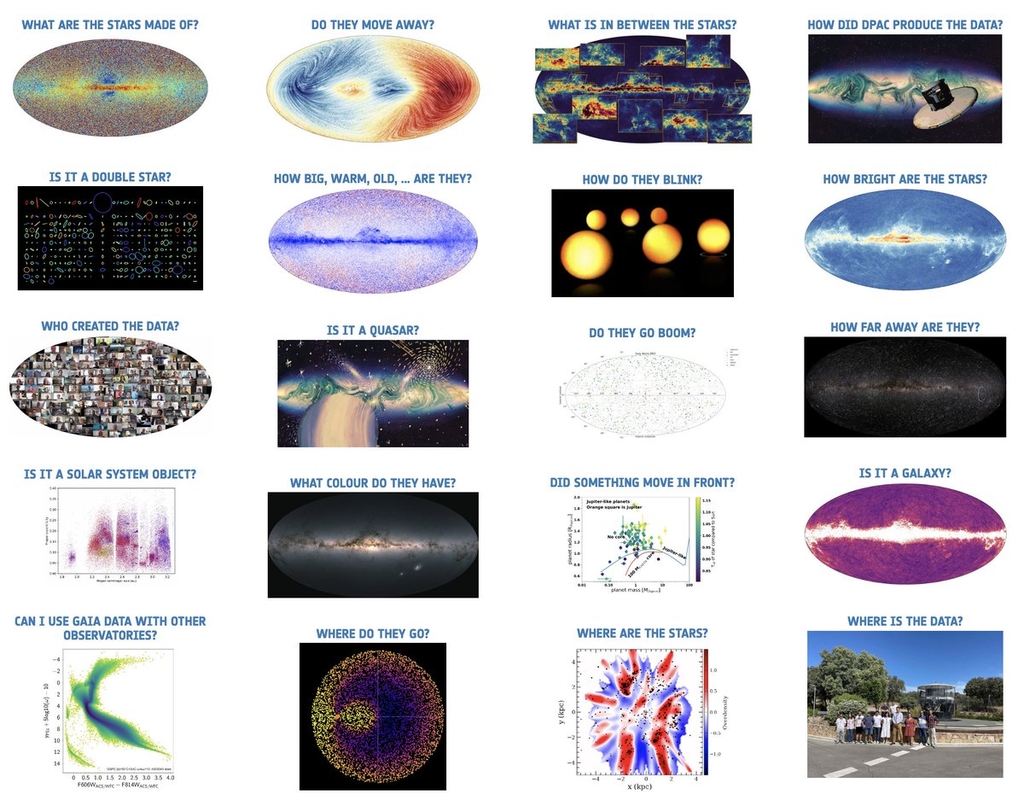
On Monday the 13th of June, the world of astronomy was holding its breath waiting for the release of the Global Astrometric Interferometer for Astrophysics (Gaia) mission’s third set of data. For more than 8 years, this European space observatory has been conducting astrometry, i.e., determining the position and motion of Milky Way stars more accurately than ever, in an attempt to create the largest 3-D map of our galaxy. The very first Data Release, DR1, occurred in 2016 when the Gaia team revealed the astrometric details of 2 million sources. In past data releases, we also have the DR2 in 2018, allowing a huge jump with 1.332 billion stars, and an Early Data Release 3 (EDR3) which was already made available on the 3rd of December 2020, adding another 136 million stars to this catalogue.
The full DR3 is even more exciting with its 2 billion sources analysed, notably in that it provides many more “Specific Objects Studies”, including of binary stars, of variable stars like Cepheids or RR Lyrae stars and of exoplanet transits, but also including objects from way beyond the Milky Way, like quasars – with more than 6 million candidates detected. Over a million stars in our neighbour galaxy of Andromeda were observed in the Andromeda Photometric Survey. Closer to home, many Solar System Objects were tracked, too, with 150 000 asteroids’ orbital parameters having been catalogued, of which 60 000 asteroids having their reflectance measured – this allows to determine their chemical composition.
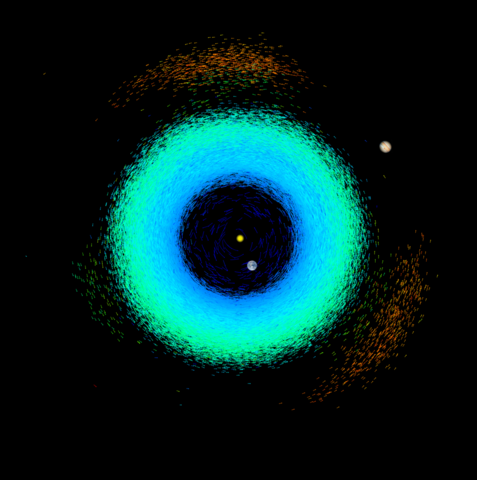
For the first time, spectral information was released on top of all the astrometric data. It has notably been used to estimate 6 million stars’ metallicity (their content in elements heavier than Helium), the full chemical abundance profile of 2.5 million of these stars. Overall, DR3 now makes Gaia the largest low-resolution spectroscopic survey and the largest collection of astrophysical data for Milky Way stars.
As one of the speakers at the event put it, Gaia can see and watch stars with the tools to conduct astrometry, it can taste and smell to obtain chemical information via spectroscopy, and it can also hear by using instruments for asteroseismology. Surprisingly, Gaia observed “starquakes” with this technique – some stars “vibrate”, causing the equivalent of incredibly massive tsunamis at the surface of the star, changing the shape of the star in a way that is actually detectable for Gaia !
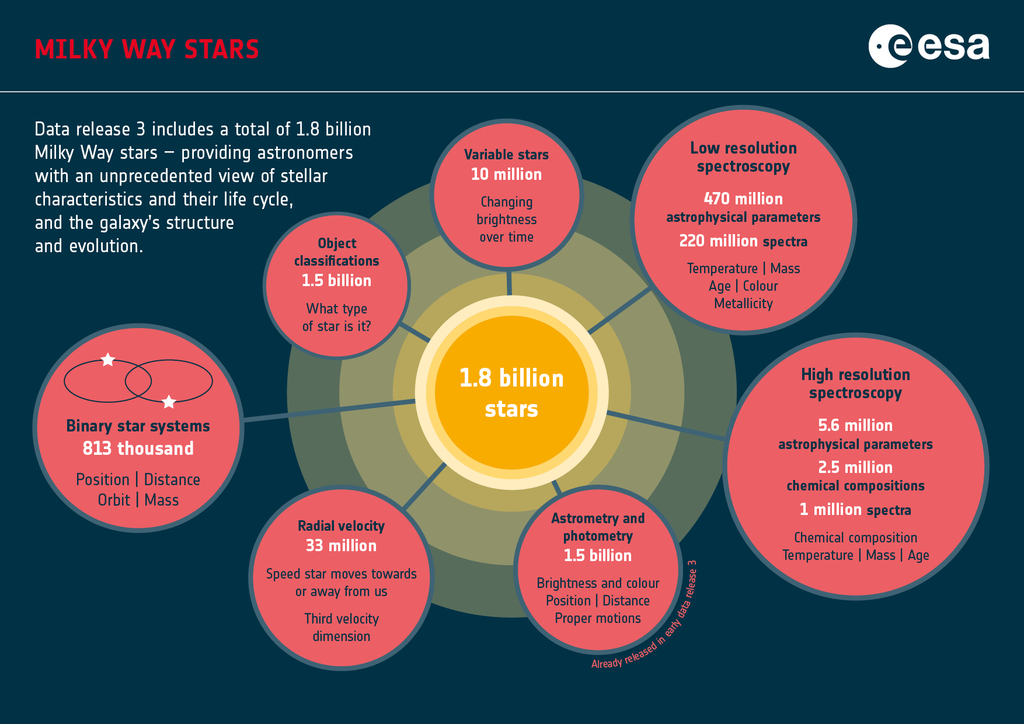
It’s worth mentioning that the Royal Astronomical Society-hosted event for DR3 took place in Goonhilly, described as the UK's Gateway to Space. This “Earth Station” indeed hosts a 32-meter antenna which is used by ESA to download data from the Gaia probe. You can listen to a recording of the full event yourself at: https://www.youtube.com/watch?v=rjCaRSJMIhc , where the speakers will describe how the spectra were calibrated against those of objects like, among others, Standard Stars and Emission Line Objects, what DR3 can say about the InterStellar Medium, how there are also new photometric results in DR3, or how line-of-sight radial velocity data for 34 million stars helps astronomers understand over 1/3 of the Milky Way’s stars motion.
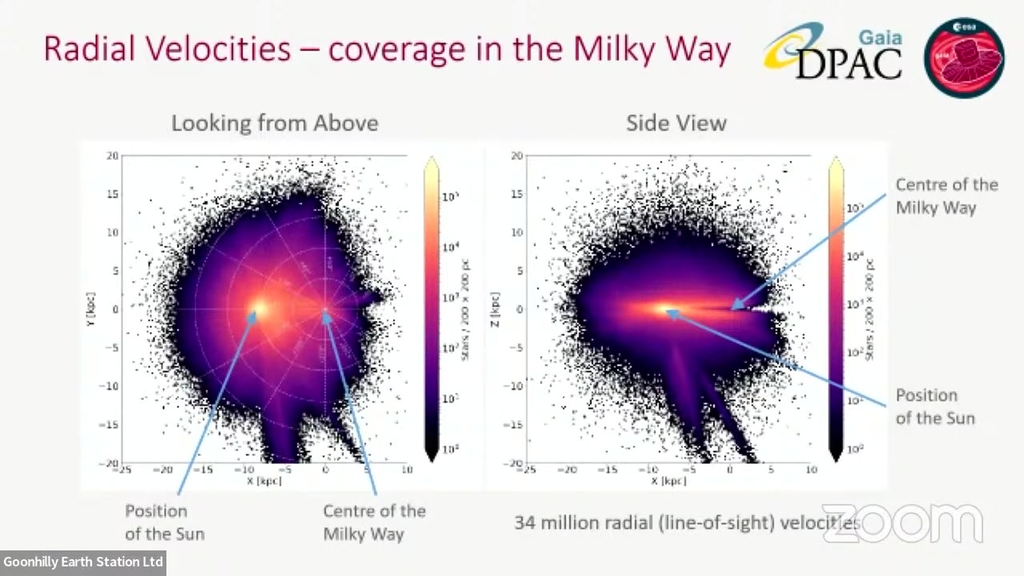
The researchers who already had access to the data before it being made available to everyone (yes, that includes you !) are publishing papers at an astonishing rate, at least 4 or 5 per day. In March, the Shaw Prize in Astronomy was awarded to Lindegren and Perryman “for their lifetime contributions to space astrometry, and in particular for their role in the conception and design of the European Space Agency’s Hipparcos and Gaia missions”. There are many more exciting discoveries that will be made with the data from Gaia’s DR3 !
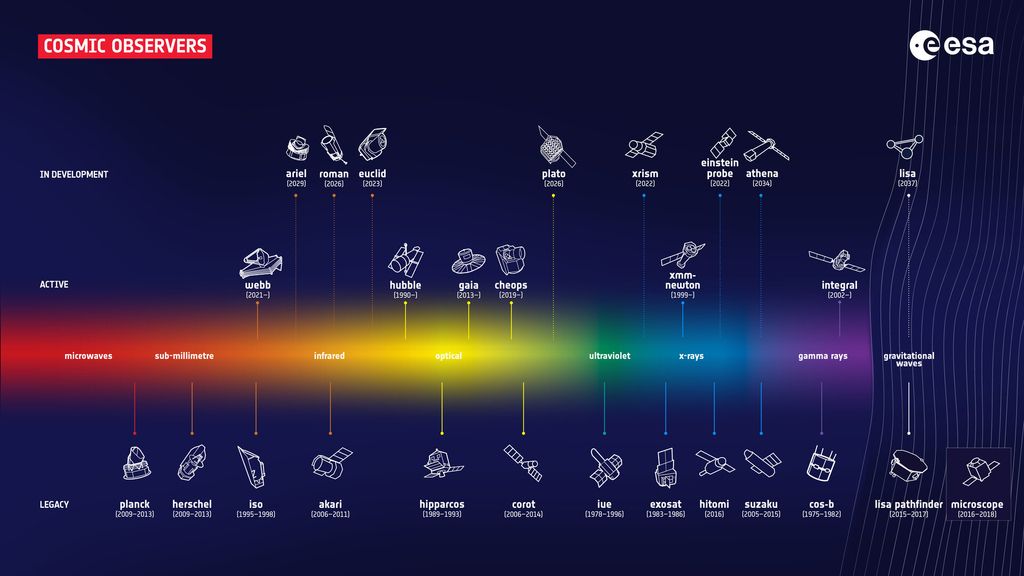
All image credits to ESA.
